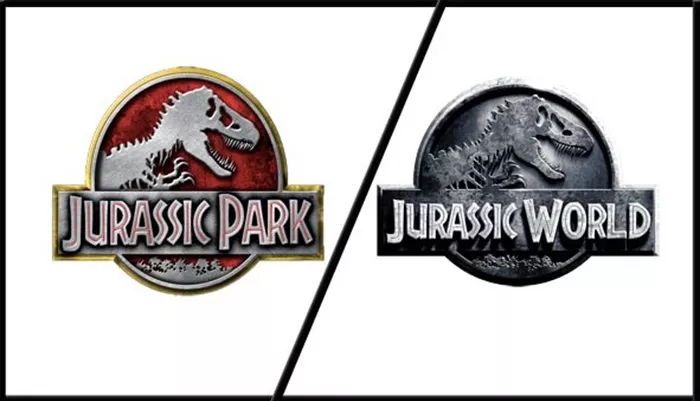Jurassic Park and Jurassic World are two popular movie franchises that explore the idea of bringing dinosaurs back to life through genetic engineering. While both franchises share a similar premise, there are some key differences between them that set them apart. In this article, we will explore the differences between Jurassic Park and Jurassic World, including their plots, characters, themes, and impact on popular culture.
Plot
Jurassic Park is a 1993 film directed by Steven Spielberg, based on the novel by Michael Crichton. The film follows a group of scientists who are invited to a theme park on a remote island where dinosaurs have been brought back to life through genetic engineering. When the park’s security system fails, the dinosaurs escape and begin to wreak havoc on the island. The film explores themes of science, ethics, and the dangers of playing God. The plot is driven by the characters’ attempts to survive and escape the island while also grappling with the moral implications of their actions.
Jurassic World, on the other hand, is a 2015 film directed by Colin Trevorrow, set 22 years after the events of the first film. The film takes place on the same island as the first film, but this time the park has been rebuilt and is now a fully functioning theme park. When a genetically modified dinosaur escapes from its enclosure, chaos ensues and the park’s visitors are put in danger. The film explores themes of corporate greed, the dangers of genetic engineering, and the consequences of playing with nature. The plot is driven by the characters’ attempts to contain the escaped dinosaur and save the park’s visitors from harm.
Characters
Jurassic Park features a diverse cast of characters, including scientists, park employees, and a group of children who are visiting the park. The main characters include Dr. Alan Grant, a paleontologist who is skeptical of the park’s safety; Dr. Ellie Sattler, a paleobotanist who is also skeptical of the park; John Hammond, the park’s founder and CEO; and Ian Malcolm, a mathematician who warns of the dangers of playing God. The children, Tim and Lex, provide a sense of wonder and innocence in the face of the dinosaurs’ danger. The characters are well-developed and complex, with their own motivations, flaws, and relationships.
Jurassic World features a new cast of characters, including Owen Grady, a Velociraptor trainer who is brought in to help with the park’s new dinosaur; Claire Dearing, the park’s operations manager who is focused on profits over safety; and Zach and Gray, two brothers who are visiting the park. The film also features the return of Dr. Henry Wu, the geneticist who was responsible for creating the dinosaurs in the first film. The characters are less developed than those in the first film, with some feeling like caricatures rather than fully fleshed-out individuals.
Themes
Jurassic Park explores themes of science, ethics, and the dangers of playing God. The film asks questions about the morality of bringing extinct creatures back to life and the consequences of doing so. It also explores the idea of power and control, as the park’s founder, John Hammond, tries to control the dinosaurs and the scientists struggle to contain them. The film’s themes are complex and thought-provoking, encouraging audiences to consider the implications of scientific advancements and the responsibility that comes with them.
Jurassic World, on the other hand, explores themes of corporate greed, the dangers of genetic engineering, and the consequences of playing with nature. The film asks questions about the ethics of creating new, hybrid species and the dangers of doing so. It also explores the idea of commercialization, as the park’s managers are more concerned with profits than with safety. The film’s themes are more straightforward than those of the first film, but still encourage audiences to consider the implications of scientific advancements and the responsibility that comes with them.
Impact on Popular Culture
Jurassic Park was a groundbreaking film that revolutionized the use of computer-generated imagery (CGI) in movies. The film’s realistic and lifelike dinosaurs captured the imaginations of audiences around the world and set a new standard for visual effects in movies. The film’s success spawned two sequels and a number of spin-off products, including video games, toys, and theme park attractions. The film’s impact on popular culture is still felt today, with the Jurassic Park franchise remaining a beloved and iconic part of the entertainment industry.
Jurassic World, while not as groundbreaking as the first film, was still a massive success at the box office and helped to revive interest in the franchise. The film’s new dinosaurs and updated special effects captured the attention of a new generation of moviegoers and helped to introduce the franchise to a whole new audience. The film’s success has also spawned a sequel and a number of spin-off products, including video games, toys, and theme park attractions. While not as iconic as the first film, Jurassic World has still had a significant impact on popular culture and helped to keep the franchise relevant in the modern era.
Conclusion
Jurassic Park and Jurassic World are two iconic movie franchises that have captured the imaginations of audiences around the world. While both franchises share a similar premise, they explore different themes and ideas, and have had different impacts on popular culture. Jurassic Park was a groundbreaking film that revolutionized the use of CGI in movies and set a new standard for visual effects. Jurassic World helped to revive interest in the franchise and introduced the franchise to a new generation of moviegoers. Both films are beloved by fans and remain an important part of the entertainment industry.
Related content:

